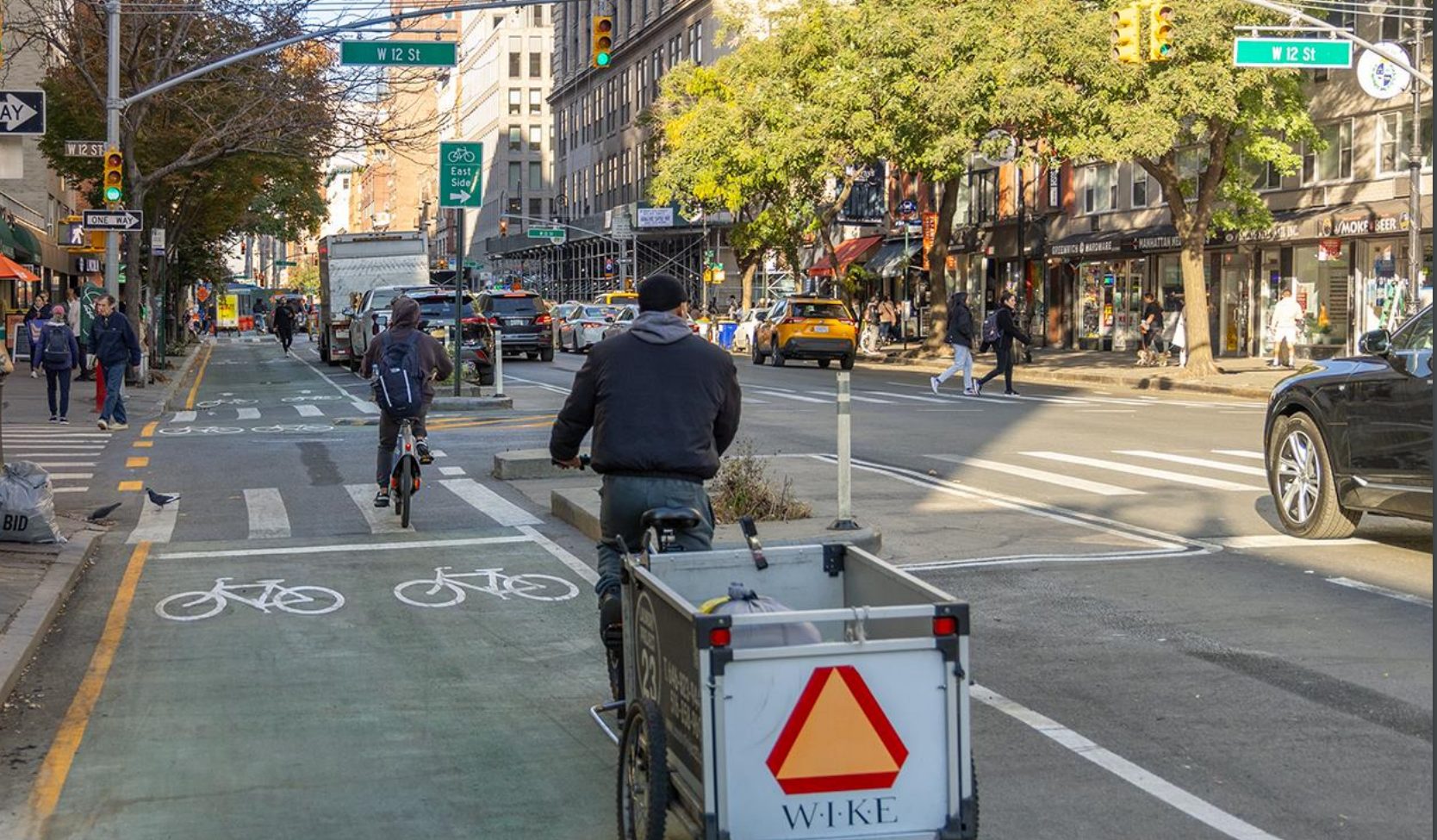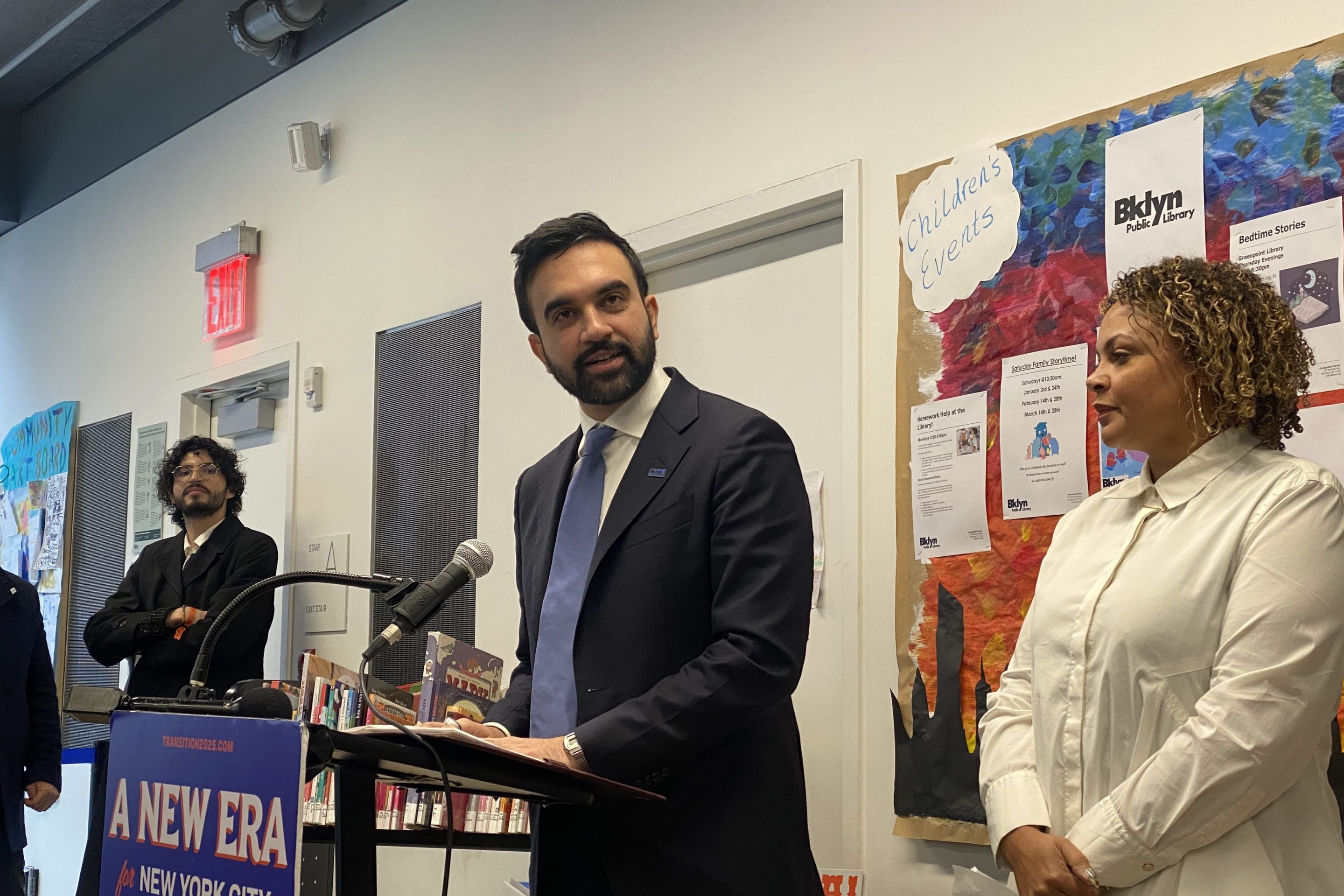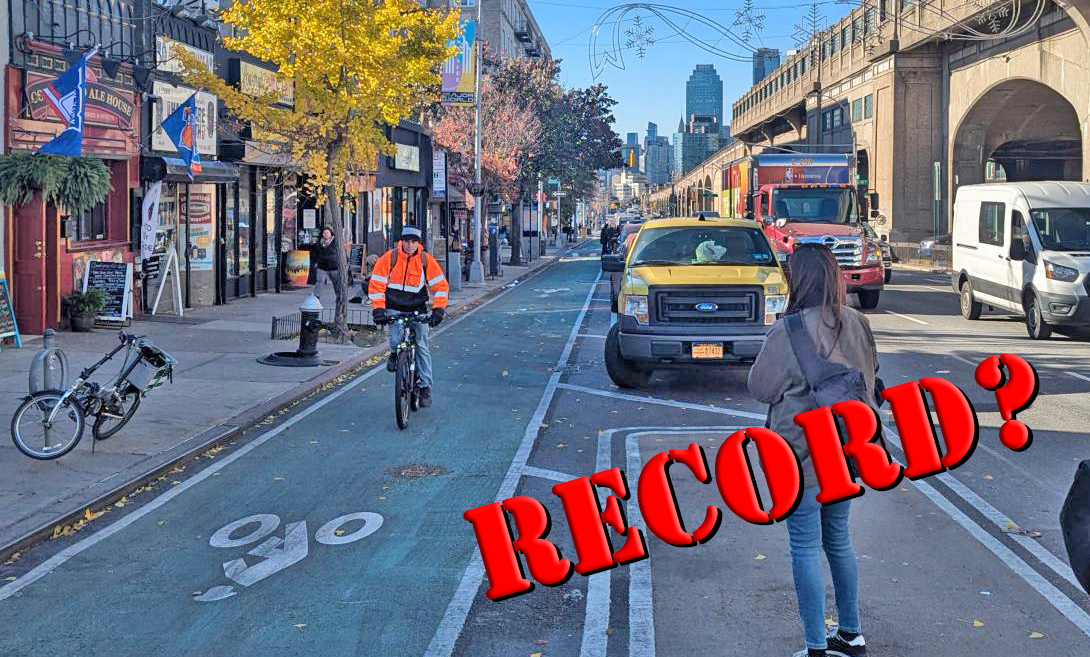The city will widen the existing protected bike lane of Sixth Avenue for more than a dozen blocks in Midtown this year by removing a car lane, according to the Department of Transportation.
DOT plans to cut one of four northbound motor vehicle lanes on the avenue between 14th and 35th streets, to accommodate a 10-foot cycling lane, extending the larger bike lanes that officials painted further downtown over the summer when they closed a gap of Sixth Avenue's bike network there.
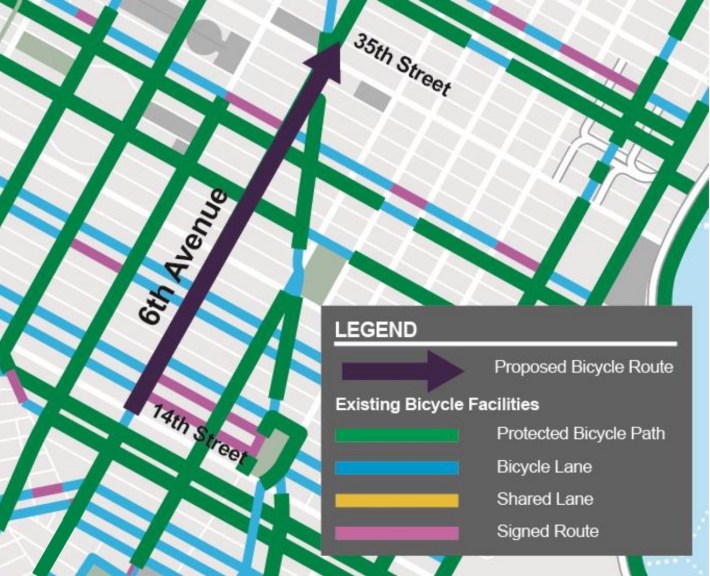
"We’re hoping we can increase the width of the bike lane to accommodate the higher volumes, the greater mix of faster and slower bikes and also wider bikes," DOT's project manager Preston Johnson told the Community Board 5 Transportation Committee on Monday.
Bike volumes have increased 21 percent on weekdays and 54 percent on weekends between 2019 and 2024 on the strip, the agency said, and the avenue is already down to three lanes to the north and south of the project anyway, making it low-hanging fruit to balance the roadway.
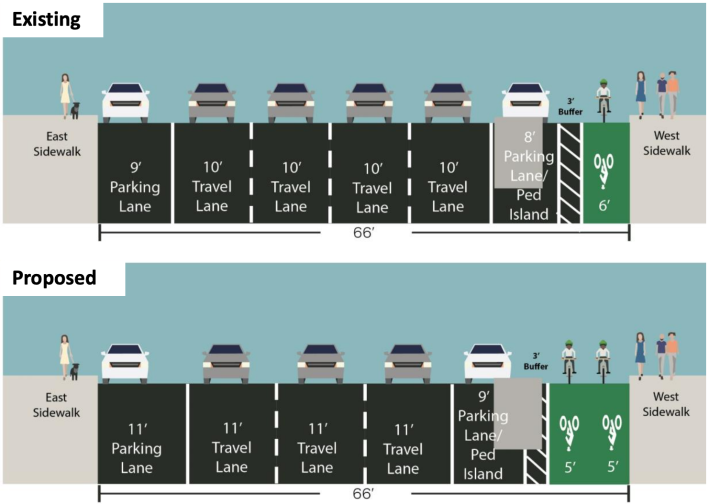
The avenue has had a bike lane as far back 1978, but the Koch administration, claiming they were underused, ripped the original barriers back out and ceded the space back to cars in 1980, prompting cyclists to protest the removal by smearing themselves in ketchup to simulate blood and laying down in front of bulldozers, The Times reported.
DOT began reinstalling bike lanes in 2016 with a protected, six-foot-wide path.
Wider bike lanes have become an increasingly popular toolkit for DOT, which has implemented the overhaul on Sixth Avenue last year south of 14th Street. The agency also added the upsized lanes to other busy bike corridors in Manhattan, including Ninth Avenue, 10th Avenue, Third Avenue, and Second Avenue, along with Queens Boulevard in the World's Borough.
The bigger paths allow for wider two-wheelers, like cargo bikes, and enable faster e-bike riders to pass safely, Johnson said. They're also easier for side-by-side social cycling.
The community board committee's vice chair hailed the redesign for making it more comfortable for less-experienced cyclists to ride.
"When I ride down the extra-wide bike lanes — especially with my friends who are new to biking or not comfortable with biking — they feel a lot safer," said Samir Lavingia.
DOT should configure the lane for two-way traffic, argued another committee member, which already happens often anyway.
"I do think you’re being shortsighted in keeping it one-way," said Christopher Nazarro. We should have two-way bike lanes everywhere because number one, that’s what people are going to do anyway."
However, another member of the civic group opposed the change, claiming that cycling infrastructure — not the drivers clogging up the streets with their massive multi-ton vehicles, typically occupied by just one person — worsens congestion.
"It’s my view that bike lanes are already a major cause of congestion throughout the city and that we’re overly dedicating too much of our street space to something that is not used 24 hours a day and not used significantly enough," said James Michael Southworth.
The population of cars in New York City is up significantly since the pandemic, a major factor in congestion, which is now on the decrease in Midtown, thanks to congestion pricing.
